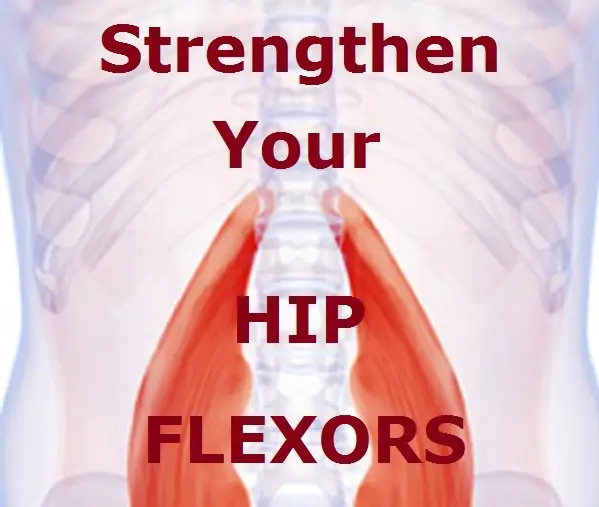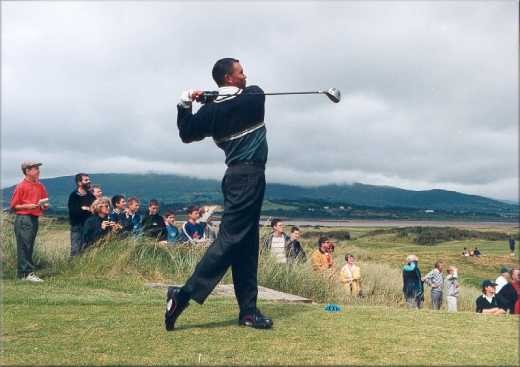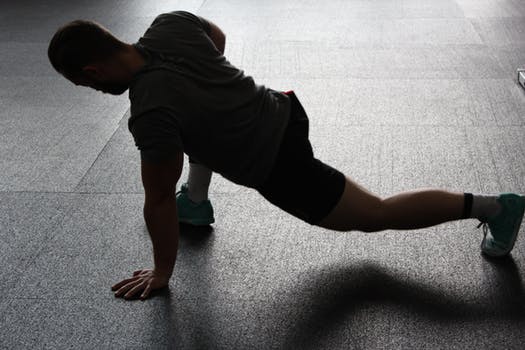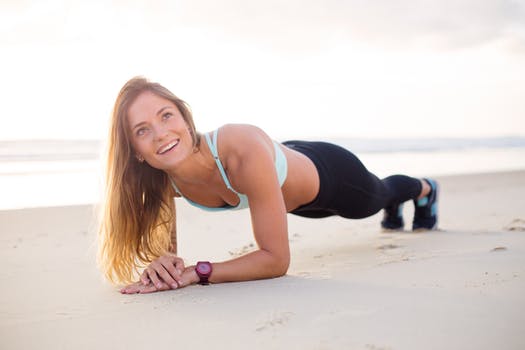6 Hip Flexor Stretches for Improving Golf Swing Rotation
 Ever wonder how those PGA Tour pros swing like that?
Ever wonder how those PGA Tour pros swing like that?
One of the secrets to the amazing power golf pros generate during their swings is the ability to rotate their hips much further than you or I.
But Tiger Woods and Rory McIlroy didn’t start out being able to turn their bodies almost a full 360 degrees.
It took many years and a lot of practice.
Professional golfers have swing coaches and sometimes an entire team of golf experts and medical professionals who help them understand what to do.
This post contains affiliate links. That means I will earn a commission if you purchase a product through certain links on this page at no additional cost to you – here’s my Affiliate Disclosure.
In this article I’m going to help you understand a little-known secret to unlocking a powerful golf swing.
Don’t have time to read the full article now? Click here to see the key hip flexor exercises you need to do right now!
While I can’t promise that you’ll be able to rotate your hips as much or generate the same amount of club head speed as today’s PGA pros, I can teach you some of the exercises that professional golfers perform to increase their flexibility and generate more power.
And their secret?
It all starts with a little-know muscle group called the hip flexors.
What Are the Hip Flexors?
The hip flexors are the muscles in front of each hip that consist of the lower abdominal muscles and upper thigh muscles. They have a tremendous influence on the rotational movement that comes into play during the golf swing.
But these muscles can actually shorten from the mostly sedentary lifestyle that many non-professional athletes lead. Without understanding the most effective hip flexor stretches for golf, it will be nearly impossible to strengthen and lengthen these muscles.
Right now, I’m seated while writing this article. There’s a good chance that you’re sitting down while reading it.
I also work on a computer at my full-time day job. Chances are good that you do too.
Then after a full week of sitting we go out and try to play a full round of golf – sometimes without even doing any type of stretches at all.
This not only has an effect on our rotational movement, swing speed, and power – or lack thereof – it can also lead to injury.
How the Hip Flexors Affect Your Golf Swing
Suppose you are a right-handed golfer who spends all week seated at the computer during your day job. After extended periods in a sedentary position, your hip flexors shorten.
As you swing the golf club during your takeaway, your right hip rotates away from the golf ball. The further you can rotate away from the ball as you bring the club back towards the top of your swing, the more you can ‘load’ up as you begin your downswing.
Anything that restricts this rotation of the right hip (for a right-handed golfer) will significantly decrease the power generated by the hip rotation of the golf downswing.
Reduced hip mobility from extended periods of sitting can have many other detrimental effects on a golfer’s health, as well.
Full hip extension on the right side (for a right-handed golfer) is also necessary to completely follow-through or ‘finish’ your golf swing. A restricted (or shortened) right hip flexor area will prevent a proper follow-through and limit hip movement, which can create an abbreviated swing.
The 6 Key Types of Hip Flexor Stretches for Golf
Since the hip flexors are generally a difficult muscle group to target, the usual golf flexibility exercises you’ve read about on my website or seen on YouTube videos are not really appropriate for effectively stretching these muscles.
To effectively stretch your hip flexors, there are six types of stretching techniques that are ideally suited to helping golfers increase hip rotation and generate more power:
1 – PNF Stretches
“Proprioceptive Neuromuscular Facilitation (PNF) is a stretching technique utilized to improve muscle elasticity and has been shown to have a positive effect on active and passive range of motions…” NCBI Article
In layman’s terms, PNF stretching is a technique used by professional sports trainers to help an athlete target a specific muscle group to reduce stiffness around a joint.
In golf swing rotation training, it’s a laser-focused technique that helps golfers stretch the muscles around their hip joints in a specialized way to lengthen the hip flexors and increase rotational mobility.
The key with PNF stretches is to focus the stretch on the proper side. For example, a right-handed golfer will probably spend more time focusing on the hip flexors of his or her right-side, while a left-handed golfer will stretch the muscles on his or her left side more.
As a general rule of thumb, spend more time stretching the side that requires the greater rotational movement.
Regardless of whether you are a right-handed or left-handed golfer, it is important to perform these ideal PNF stretching exercises for both sets of hip flexors to strengthen each core muscle group, as well as reduce the risk of injury.
2 – Dynamic Stretching
Dynamic stretches are stretches that utilize many of the aspects of the PNF technique described above.
Dynamic stretches are stretches that activate a muscle or group of muscles that surround a joint and then utilize these muscles to move the joint through its full range of motion.
These stretching exercises are done incrementally by gradually increasing the range of motion of the joint in a slow, but progressive manner.
This leads to an increased range of motion around the joint. It also leads to improved circulation around the joint.
An example of a dynamic stretching exercise is a lunge with a twist. It’s called dynamic because this type of exercise engages your hips, legs, and core muscles all at once.
To generate more speed and power in your golf swing, dynamic stretches involving the hip flexors, core muscles and lower back and thighs in combination are the key.
3 – Three-Dimensional Core Stability Exercises
One of the keys to strengthening the hip flexors is understanding their primary function as part of the muscle group sometimes called the core muscles.
Core muscles are defined as the area of the abdominals, mid to lower back, hips and upper thighs according to this Wikipedia article about the core muscle groups.
With the 3-dimensional core exercises you will be targeting the muscles that facilitate all planes of movement in your core areas. Strengthening your core will help to improve posture and help eliminate lower back pain.
Stretching exercises that target the core and abdominal muscles leads to a decrease in unnecessary and damaging stress on joints – especially the hips as you rotate through your golf swing.
4 – General Mobility Stretches
Similar to other types of stretches you may have seen before, these mobility stretching excises help lengthen the muscle tendons to allow a greater range of motion of the target joints.
An example of a general mobility stretch is the ankle mobility stretch. You can perform the ankle mobility stretch by following the five simple steps outlined below.
- Stand up without slouching and face a wall.
- Place the palms of your hands facing away from you on the wall. This will provide support while you perform this exercise.
- Slowly rock your feet forward towards the wall until you are standing on your toes. Hold this tip-toe position while balancing yourself with your hands on the wall. Hold this position for 3 seconds.
- Lower the soles of your feet and slowly rock your feet back onto your heels until your toes are now lifted off the ground and you are balancing yourself on your heels. old this position for 3 seconds.
- Repeat steps 1-4 as many times as you can, all the while holding the wall for balance.
The ankle mobility stretch helps increase the range of motion of your ankle joints.
Since the hip flexors are a little more complex than the ankle, there are a number of mobility exercises that golfers use to increase their hip rotation by targeting the muscles around their hip joints.
5 – Fascia Stretching
With the Fascia technique, you will be targeting the connective tissue that surrounds the core muscles of the hip flexors. These stretches will help loosen and lengthen this connective tissue – called the fascia – to increase your range of motion as you rotate your hips throughout your backswing and downswing.
Few people understand the negative effect this tissue can have on your hip rotation during the golf downswing if not stretched and strengthened properly.
6 – Muscle Activation Movements
The leading contributing factor to shortened, tight hip flexors that lead to many major golf injuries is sitting for prolonged periods of time.
Due to all of the sitting we do on a daily basis as we work on our computers and use other technology like smartphones, laptops and watch endless hours of television, many of our muscles have begun to exhibit the early stages of atrophy from not using these muscles.
Muscle activation techniques target those muscles that have begun to atrophy or are otherwise said to be ‘off’ and help reverse the negative effects from lack of use.
An example of a muscle activation exercise is a typical golf hip rotation exercise whereby you will hold your driver at arms length away from your body and parallel to the ground with your hands shoulder-width apart.
From this position you will then turn s-l-o-w-l-y to your right while keeping both feet planed firmly of the ground. Rotate until you feel that you cannot rotate any further and then hold this position for as long as you can.
Once you feel that you can no longer hold this position begin to rotate in the opposite direction and turn as far as you can in this direction. Rotate as far as you can and then hold this position for as long as possible.
Repeat.
This muscle activation stretching technique will help unlock your hip flexors in order to make your body move more efficiently when you swing the club.
The KEY to Unlocking Your Golf Swing Power
Understanding the six main types of hip flexor stretches for golf discussed above is really only the tip of the iceberg when it comes to understanding how to increase hip rotation speed to produce more power throughout your golf swing.
To really benefit from these techniques it is crucial to understand the most important aspect of this type of training.
It is not only about knowing what types of exercises to do, but – even more important – is to perform these exercises in the order that is most effective for unlocking your hip flexors in order to generate complete hip rotation throughout your golf backswing and downswing.
What’s even more intriguing is that these exercises – when done regularly and using the proper techniques – can also help eliminate other types of pain golfers sometimes experience, such as lead hip pain.
How Stretching the Hip Flexors Can Eliminate Hip and Back Pain (Video)
Conclusion
By now you’ve learned that a core group of muscles called the hip flexors are responsible for helping golfers increase their rotational mobility and generate more swing speed and power.
However, these muscles become shortened (and tighter) from all of the sitting we do at our jobs, commuting to and from work, and watching television at home.
This leads to a shorter range of motion and less power in our golf swings. Not properly stretching these muscles can also lead to injury.
We’ve discussed the 6 types of hip flexor stretches for golf above and I’ve linked out to various resources to provide more information about how and why to do these exercises, as well as the specific hip flexor stretching exercises to do to improve your golf swing rotation.
My last piece of advice to you is this: Work consistently on increasing hip flexibility by implementing these exercises and see it improve not only your golf swing, but your overall health and lifestyle.
Happy Golfing!




Thanks
Very informative. I am a sales rep and drive all over the Southeast. I started golfing 2 months ago and have already pulled my right hip flexor. What is your advice for healing this? Should I stretch or just rest it for a period of time?
Regards
Marcus Sizemore
Hi Marcus,
Since I am not a doctor I wouldn’t want to give you any misleading information. You sound like you have already injured your hip flexor so I would consult your doctor before practicing any stretching exercises. If your doctor does recommend stretching, I would start with the exercises I describe in this article and if you want to take it to the next level then check out some of the links above for a more in-depth hip flexor stretching program.
But please, first CONSULT YOUR DOCTOR BEFORE DOING ANY EXERCISES to make sure he or she thinks it is appropriate given your pre-existing injury.
Thank you for stopping by!
Bill